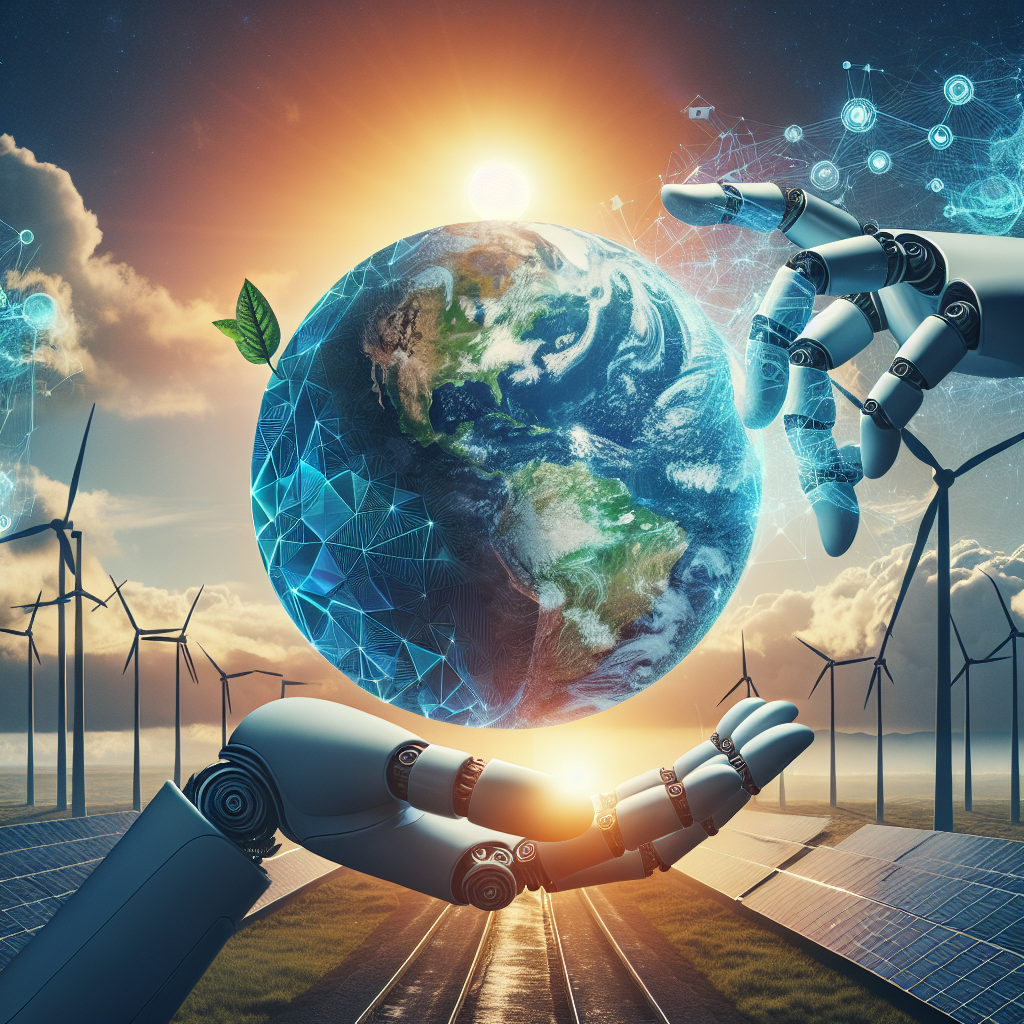Climate change is one of the most pressing issues facing our planet today, with the impacts of global warming becoming increasingly evident. One of the key areas affected by climate change is the renewable energy sector, which plays a crucial role in reducing greenhouse gas emissions and transitioning to a more sustainable energy system. As the effects of climate change continue to intensify, the need for accurate prediction and mitigation strategies becomes more urgent. This is where artificial intelligence (AI) comes into play, offering innovative solutions to help predict and mitigate the impacts of climate change on renewables.
The Role of AI in Predicting Climate Change Impacts on Renewables
AI has revolutionized the way we analyze and interpret data, allowing us to make more accurate predictions about the future of our planet. When it comes to predicting the impacts of climate change on renewables, AI can be used to analyze vast amounts of data from various sources, such as weather patterns, energy production levels, and carbon emissions. By processing this data, AI algorithms can identify trends and patterns that can help us understand how climate change is affecting renewable energy sources.
One of the key ways AI is being used to predict climate change impacts on renewables is through the development of predictive models. These models use historical data to forecast future scenarios, such as changes in temperature, precipitation, and sea levels. By inputting data on renewable energy production and consumption, these models can help us understand how climate change will impact the availability and reliability of renewable energy sources.
AI can also be used to optimize renewable energy systems in response to changing climate conditions. For example, AI algorithms can help solar and wind farms adjust their operations based on weather forecasts to maximize energy production. By predicting when clouds will cover the sun or when the wind will slow down, AI can help renewable energy systems operate more efficiently and effectively in response to changing weather patterns.
Mitigating Climate Change Impacts on Renewables with AI
In addition to predicting climate change impacts on renewables, AI can also play a crucial role in mitigating these impacts. One of the key ways AI can help mitigate the effects of climate change on renewables is through the development of adaptive strategies. By using AI to analyze real-time data, renewable energy systems can adjust their operations in response to changing climate conditions, such as extreme weather events or fluctuations in energy demand.
AI can also help optimize the integration of renewable energy sources into the grid. As the share of renewables in the energy mix continues to grow, it becomes increasingly important to ensure that these sources can be efficiently integrated into the grid. AI algorithms can help manage the variability of renewable energy sources, such as solar and wind, by predicting energy production levels and adjusting grid operations accordingly.
Furthermore, AI can also be used to develop more resilient renewable energy systems. By analyzing data on climate change impacts, such as sea level rise and extreme weather events, AI can help identify vulnerabilities in renewable energy infrastructure and develop strategies to strengthen resilience. This can include building more robust wind turbines and solar panels, as well as implementing backup systems to ensure energy supply during extreme weather events.
FAQs
Q: How can AI help predict climate change impacts on renewables?
A: AI can analyze vast amounts of data on weather patterns, energy production levels, and carbon emissions to identify trends and patterns that can help us understand how climate change is affecting renewable energy sources. By developing predictive models, AI can forecast future scenarios and help us prepare for the impacts of climate change on renewables.
Q: How can AI mitigate the effects of climate change on renewables?
A: AI can help mitigate the impacts of climate change on renewables by developing adaptive strategies that allow renewable energy systems to adjust their operations in response to changing climate conditions. AI can also optimize the integration of renewable energy sources into the grid and develop more resilient renewable energy systems to withstand the effects of climate change.
Q: What are some examples of AI applications in the renewable energy sector?
A: Some examples of AI applications in the renewable energy sector include using AI algorithms to optimize solar and wind farm operations based on weather forecasts, developing predictive models to forecast energy production levels, and analyzing data to identify vulnerabilities in renewable energy infrastructure and develop resilience strategies.
In conclusion, AI plays a crucial role in predicting and mitigating the impacts of climate change on renewables. By analyzing vast amounts of data and developing innovative solutions, AI can help us better understand how climate change is affecting renewable energy sources and develop strategies to ensure a more sustainable energy future. As the effects of climate change continue to intensify, the integration of AI into the renewable energy sector will be key to building a more resilient and efficient energy system.

